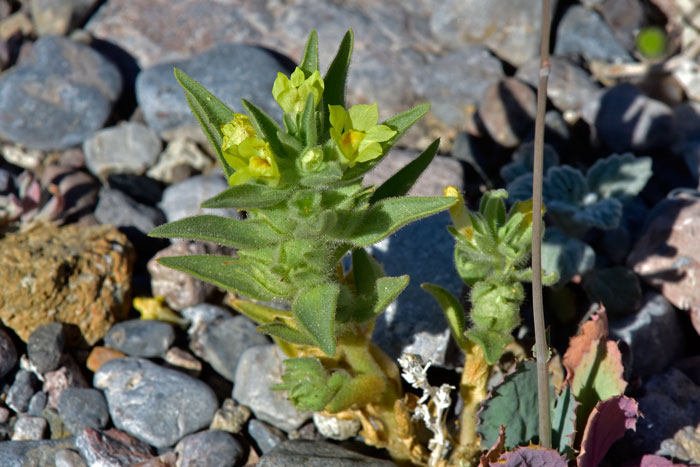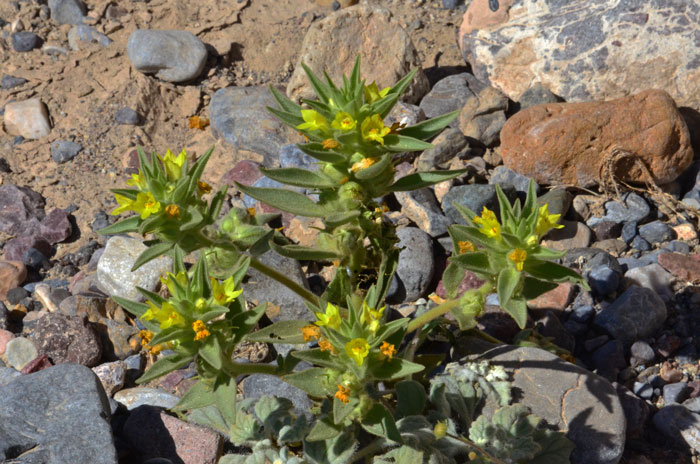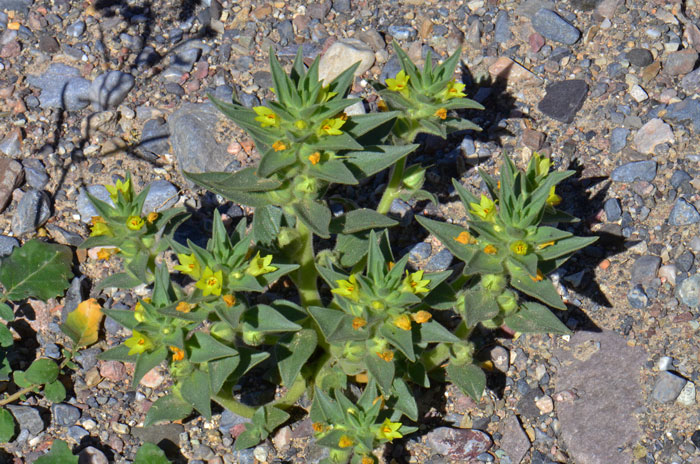Mohavea breviflora, Golden Desert-snapdragon




Scientific Name: Mohavea breviflora
Common Name: Golden Desert-snapdragon
Also Called: Golden Desert Snapdragon
Family: Scrophulariaceae, Figwort or Snapdragon Family - Moving to Plantaginaceae
Synonyms: ()
Status: Native
Duration: Annual
Size: Up to 7 inches or so.
Growth Form: Forb/herb; plants are short; multiple, erect stems; covered with a fine pubescence.
Leaves: Green; alternate, leaves with fine pubescence; leaves with petioles; narrowly or broadly lanceolate; margins entire.
Flower Color: Yellow, bright yellow, marked with few reddish-brown spots on swollen base; flowers small, about ½ inch; inflorescence flowers in leafy racemes, flowers on short pedicels; corolla dark yellow; lower lip deeply cleft.
Flowering Season: March to April in Arizona and California.
Elevation: Below 2,000 feet; 300 to 4,500 feet in California.
Habitat Preferences: Mojave desert preferences; dry sandy, stony gravelly desert slopes, washes.
Recorded Range: Mohavea breviflora is relatively rare in the United States where it is found in AZ, CA, NV, UT. In Arizona it is found in the northwest parts of the state in Mohave County. This species is primarily a Mojave Desert species.
North America & US County Distribution Map for Mohavea breviflora.
U.S. Weed Information: No information available.
Invasive/Noxious Weed Information: No information available.
Wetland Indicator: No information available.
Threatened/Endangered Information: No information available.
In the Southwestern United States, Arizona, California and Nevada each have 2 species of Mohavea, New Mexico, Texas and Utah each have 1 species. All data is approximate and subject to taxonomic changes.
Comments: Mohavea breviflora is a relatively rare plant in the United States preferring habitats within the Mojave Desert. The photos above were taken at Death Valley National Park, February, 29.

